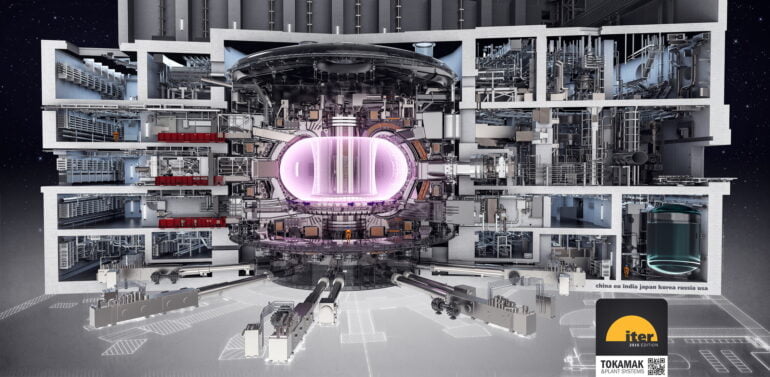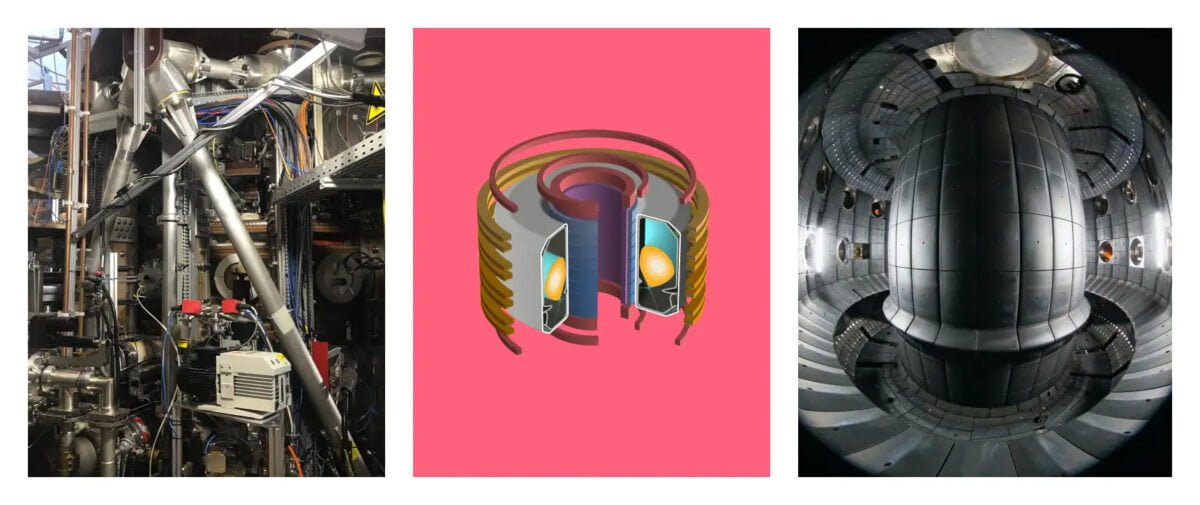Deepmind brings artificial intelligence to fusion research. Google's sister AI company aims to simplify the development of new fusion reactors in the long term.
Fusion energy has been touted as a potential solution to energy problems since the nuclear age. Using thermonuclear fusion to generate electricity promises a clean and inexhaustible source of energy.
In the fusion process, two atomic nuclei combine to form a heavier nucleus, releasing energy in the process. Fusion is only possible at extremely high temperatures. The reactors must therefore produce plasma that is 150 to 300 million degrees hot and keep it stable long enough to generate energy.
Because the high temperature prohibits any contact with surrounding materials, nuclear fusion reactors of tokamak design rely on magnetic coils to trap the plasma in a magnetic field in a central chamber.
Large reactors being built in Europe
Scientists around the world are conducting research on international and private test reactors of various architectures. Most use heavy hydrogen isotopes such as deuterium and tritium.
One of the largest test reactors is currently being built in France: Initial plans for ITER (International Thermonuclear Experimental Reactor) date back to the late 1970s. The reactor is scheduled to be ready in 2025 and generate the first plasma. A successor called EU DEMO is already planned and is to be commissioned in the 2050s.

Projects such as ITER, DEMO, and others are intended to demonstrate that fusion energy is commercially viable. The goal is to improve the ratio of added energy to fusion energy produced in the plasma. ITER is expected to produce about ten times more fusion power than heating power needed. DEMO is expected to increase the factor to 25.
Plasma control is the key problem of nuclear fusion energy
A key challenge here is controlling the plasma that is formed and maintained in the magnetic fields. To do this, a control system must coordinate the numerous magnetic coils and adjust their voltage thousands of times per second. Otherwise, the plasma can touch the walls of the chamber, causing heat loss and potential damage. The plasma can also be shaped into different forms that promise different energy gains.
So far, algorithms developed by human experts have been used to control the magnetic coils. The British AI company Deepmind, which has been increasingly bringing artificial intelligence to various sciences for several years, is now demonstrating an AI system that can take over the control of the magnetic coils.
The system was created in cooperation with the Swiss Plasma Center at the Swiss Federal Institute of Technology Lausanne (EPFL) and was tested on the Variable Configuration Tokamak (TCV) reactor there, which can keep plasma stable for about three seconds.
Deepmind AI controls plasma
Until now, each of the TCV's 19 solenoid coils has been controlled by its own controller, which uses an algorithm to estimate the properties of the plasma in real time and adjust the voltage of the magnets. In contrast, the AI system unveiled by Deepmind controls all the coils at once and can create different shapes from plasma.
The AI system was trained to do this using data from an existing TCV simulation, in which the AI was able to learn how to control the coils directly from the simulated sensor data. Since certain dynamics of the real reactor are not adequately represented in the simulation, the AI also learned to stay within predefined limits when controlling it, such as the maximum coil current.
After training in the simulation, the AI system in the real TCV was able to control the solenoid coils and create a number of plasma shapes that were considered suitable candidates for reactors. Among the shapes were two separate "plasma drops" that had never before been stabilized in a TCV reactor.
Video: Deepmind
According to Deepmind, the AI system facilitates research into the behavior of plasma under various conditions, improving understanding of nuclear fusion reactors. In addition, the system could be quickly deployed in a new tokamak reactor without the lengthy development of control systems used today. The system thus also enables evaluation of proposed designs before they are built.
In the long term, Deepmind hopes to use AI to enable the development of new reactor designs by optimizing the plasma shape, sensors, propulsion, inner wall design, heat load and magnetic control in unison.







